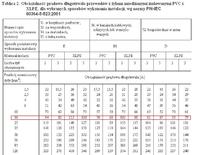I warmly welcome :)
Please help oriented :)
What is the maximum power to load a 16 mm2 cable with a length of 8 meters, assuming that 28 kW are 1F heaters, the rest are "common" household appliances (washing machine, fridge, kettle, several computers, sockets with devices with low power consumption)
I know, the data is not very precise, but I don't know what to write, so if the question is asked, I'll fill it in.
Thank you in advance for your help :)
greetings
Gregory
Please help oriented :)
What is the maximum power to load a 16 mm2 cable with a length of 8 meters, assuming that 28 kW are 1F heaters, the rest are "common" household appliances (washing machine, fridge, kettle, several computers, sockets with devices with low power consumption)
I know, the data is not very precise, but I don't know what to write, so if the question is asked, I'll fill it in.
Thank you in advance for your help :)
greetings
Gregory



